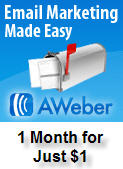Marketing Tips For Local, Brick and Morter Businesses
Verify Your Local Listing
I’ve said this before, but I want to make SURE you have covered your bases with Google, Yahoo, and Bing Local Search submissions.
Remember that when I refer to, for example, “Google Local Search”, I’m talking about the business listings they show by the map on their first page. Search for “Austin Plumbers” and you’ll see what I mean.
Do a search for your business area with your location. If you are a roofer in Dallas, go to Google and search for “Dallas roofer”. Look for your business there by the map. If it is not there, click the link at the bottom of the list and the link for “more results”. Click through all those listings to see if you find your business.
Chances are, your business will be listed there even if you DID NOT submit it yourself. Google scours the web and probably will find reference to your business somewhere and go ahead and list it. If that is the case, it is VITAL that you claim and verify that business. To do this, simply click on the “more info” link for your business and then click to edit it. You will then be given the opportunity to verify it.
If you don’t verify your listings, Google will not rank it as well. Also, unverified listings are vulnerable to being claimed by spammers and or unscrupulous competitors who would insert their own phone number/info. If that happened, you could undo it, but it
would be a major hassle.
Now go and check your listing in Google. Next do the same for Yahoo and Bing. Note that Yahoo and Bing are not as good at showing the mapped local listings as Google. However, it’s important you list and verify your business in those search engines as well.
Get Your Business On First Page 2, 3, Maybe Even 4 Times!
People are not just searching for products and services now days. A LARGE number of folks are searching for products or services AND their city. People in Miami right now are searching for “roofers in Miami”. That is what we call “Local Search”.
If you are a roofer in Miami, you better be taking advantage of that fact! If you are not, your competitors are taking new customers away from you right at this moment!
The good news is that it is very easy to position your business well for those types of local searches. Right now, MOST of your competitors do not understand local search marketing. They are stuck in their “old school” advertising mentality for using Yellow Pages and newspapers.
Now is the time to ramp up your local search marketing efforts! The longer a business waits to get good placements, the harder it will be. Every day there are more and more businesses discovering the huge profit potential those local searchers have to offer.
After you submit and VERIFY your business in Google, Yahoo, and Bing Local Search, your next step is working on your business website. Having your business rank well for local searches requires a bit more of work than doing well with Local Search submissions
with the big 3 search engines. However, the ROI with respect to your time can be tremendous for your efforts.
Imagine having your business show up twice OR MORE on the first page of Google results in BOTH the Local Search listings AND Google’s regular web page listings! Imagine what that would mean for your business!
What is New Customer Really Worth To You?
It’s always a good day when a new customer arrives at your business and buys your product or service. But do you see the bigger picture when a transaction with a new customer occurs? Unfortunately, most business owners are stuck in the “sales today” mindset.
Sure, you have bills today which need paid. It’s a good thing to also produce income today. However, there is far more to business success than simply chasing today’s sales.
Imagine when a new family moves to town and the need first arises for them to send flowers to a friend or loved one. They will search for a local florist (quite possibly using Google, Yahoo, or Bing). The florist they choose will most likely make a sale for $20 to $30; it’s a good day for the florist.
Next, one of two things will happen:
1. The florist does a good job. The customer is happy and will return to the same florist the next time he or she needs to buy or send flowers.
2. The florist drops the ball and the customer is not happy. Next time they will find another florist.
In the first case, the florist gained a LOT more than just that one $30 sale. Most of us will send or buy flowers at least 2 to 3 times a year. Plus, if the florist also offers gifts, we may visit the store for non-floral gift purchases too. It’s not difficult to see how one happy customer could generate $200 to $300 worth of sales per year. That’s a nice bundle of cash over the next ten years.
On the other hand, if the customer is unhappy, that $30 sale mishap lost the florist thousands of dollars of future income. Plus, this is NOT considering the impact of negative word of mouth advertising. (Customers speak about BAD experiences far more than about good experiences.)
Now apply the numbers to your own business. How much COULD a new customer be worth to your business over the next 10 or more years?
When you calculate the long term value of a new customer, I bet the next new person in your door will have your full attention!
Bye Bye Yellow Pages
The Internet is destroying old style advertising. Newspapers are going belly up right and left. Yellow Page usage is declining every year.
Here is my prediction: In 3 years all the third party Yellow Page companies will be gone and the phone companies will only give out phone books upon request. In 5 years we will begin seeing phone companies abandon phone books altogether. They will provide an
online data base for phone numbers instead of the hard copy white pages. They will sell ads within those online white pages and maybe offer their own version of online Yellow Pages.
Until then, Google will keep doing what they do and attracting more and more local searches. A Google search for “Atlanta bakery” provides far better and more detailed information than the Yellow Pages ever could. Plus, that search in Google only takes about 2 seconds. You can’t even reach for the Yellow Pages in that length
of time.
I have not used the Yellow Pages in over a year. Honestly, I’m not even sure which drawer my wife has put them in. But who cares? I have Google.
Do you still use the Yellow Pages a lot? If so, I worry that you may think that is normal practice and everyone does it. Everyone does not!! If you base your marketing on the fact that YOU still use the Yellow Pages, you are leaving piles of money on the table. You are missing out on the enormous opportunities local search provides.
The majority of consumers today EXPECT your business to have an online presence.
Here’s a fact from the Pew Internet Project:
50% of American consumers are more likely to visit businesses providing information online (even if they are not selling online).
When you finish reading this post, I want you to open Google.com and do a local search for what your business offers. For example, if you clean carpets in Reno, search for “Reno carpet cleaners”.
Did your business show up in Google Local (right there by the Google map)? If not, you are losing money every day to those businesses who do understand the power of local online marketing.
If your business relies on the Yellow Pages, don’t put off local online marketing. Listings in Google Local don’t cost you a DIME!
6 Steps for Local Search Marketing Success
I realize local business owners have a lot of “irons in the fire”. There can be very little time for working ON their business because so much time is spent working IN the business. They may understand the importance of local online marketing, but at the same time they feel frustrated and overwhelmed with the amount of time it seems
like it will take.
I want to offer you some strategies for dealing with this. First, it is great that you understand how vital it is that your business takes advantage of the online market. Not only is it very true today, but in the coming months and years it will become THE key
component of local advertising. If the task of positioning your business in front of this new wave of potential customers seems too high of mountain to climb right now, don’t simply bury your head in the sand and tell yourself you will start “next month”.
Understand that success online does not come overnight. Therefore, you do not have to make it all work and put all the pieces together by next week. That’s the great thing about online marketing; when you have a long term strategy, the overall project can be broken
down into small and easy to manage parts.
There is no need to stress out about any of this!
Let’s look at a hypothetical situation. Mary Jane has been operating a dog grooming business in her city for a number of years. Up to now she has done OK with her Yellow Page and newspaper ads, flyers, and handing out business cards. But Mary, like most business owners, would like to move from doing “OK” to doing GREAT! She knows from past experience that increasing her Yellow Pages and newspaper ad spending is not cost effective. She has done her research and understands she is leaving piles of money on the table by not having much, if any, presence online.
But where does Mary even begin? She is not that computer literate and the thought of spending time “learning” stresses her out. She just wants to groom more dogs!
Here’s a simple plan Mary can do that won’t stress her out and at the same time will result in MANY more dogs to groom in the coming year:
1. Mary should commit X amount of time each week for online marketing. Even if it’s just 60 minutes sometime each week, Mary must budget that time into schedule.
2. Mary needs to first focus those 60 minutes each week on building her local listings in Google. Build a really great listing with all the pictures and videos allowed along with a well thought out description and categories. This may take several hours of work in total, but no problem! In a month’s time she will have a great Google business listing.
3. Next she will create her local business listings with Yahoo and Bing. These will go much faster as the process is close to the same as Google’s and she has gained some experience.
4. Creating those local listings is the first and most important step. Depending on the size of her market, she then needs a strategy for moving her listing to the first page. This is where a local search consultant comes in handy. The consultant can offer a strategy to fit her exact market depending upon its size and the number of competitors.
5. Mary should not stop with just the local listings. The next easiest thing to do (I like to get the easy things done first) is begin Craigslist and Kijiji marketing. These take no particular computer skills and have no cost. Ongoing campaigns in these local classified listings are simple to maintain. Mary can budget part of her 30 minutes each week to managing this important component of local search marketing.
6. Lastly, in order to max out her 60 minute allotment of time each week, writing articles is a simple next step. These articles will be used for both submissions to article directories (Google loves to show articles from the top article directories) and for her blog or website. Depending on her computer skills, she will have to devote a certain amount of time learning how to use a blog (or a website is she is more gung ho). It’s not that hard to setup and use a WordPress blog. While learning the process, Mary also needs to allot some of the time to learning what Search Engine Optimization (SEO) is and how to optimize her site for the search engines.
If Mary will simply commit to and follow the above plan, the one hour a week she devotes to online marketing will put her ahead of the vast majority of her competition! Most business owners are simply not doing this much marketing online yet. This puts Mary in an excellent position to begin reaping the rewards from online search marketing for months and years to come. By following that simple plan, Mary will have a very firm footing online in 3 to 4 months.
After that time, I fully expect Mary to be so thrilled with the results that she will WANT to add another 60 minutes each week! Business will be so good that Mary will be looking to hire a helper so she can spend more time working ON her business instead of IN it!
Boost Your Google Local Listing
One big stumbling block local businesses have is there web site. Most are lucky to have whatever they have up on the Internet at all. Only a very few have gone the extra mile to learn and/or pay for a well optimized website. By “optimized”, I mean a web site that has been created with both human visitors AND search engines in mind.
I want to make this statement perfectly clear: You MUST design your website for both humans AND search engines.
If you want to learn how to create and manage your web site, great! If you want to pay someone to do it for you, great! Either way, just make sure your business has a well designed site. Your web site plays a key role in how well your business does with local search marketing.
Not only can a well optimized website attract new customers all by a well ranking site in your local business listings (those listings right there by the Google map in a local search) can GREATLY influence your local business ad rankings! High ranking local business listings, especially in highly competitive areas, almost always have a well optimized site associated with them.
What do I call a well optimized site? First, it is not JUST a brochure site. No matter how “pretty” your site is, if the search engines don’t care for it, they won’t rank it well and no one will ever see it. Whoever creates the site MUST understand the fundamentals of SEO (search engine optimization). Do not create a site without this knowledge. It’s far easier to do it right the first time than to go back and fix a poorly designed site. Learn about SEO before beginning your site. If you already have a site on the Internet, you should still learn SEO so you can modify it and make it more search engine friendly.
A well optimized site will have at least 4 or 5 pages of content optimized for carefully researched keywords. I won’t go into the details here for selecting the right keywords, but be aware thisi is a key part of a successful site. More pages are better, but 4 or 5 are the minimum. A page of content consists usually of 400 to 700 words. Yes, content is king! Content is one of the main factors search engines use to rank niche sites. Your site, when optimized for a specific city, is considered a “niche site” regardless of how popular the overall service or product is.
You can use a blog platform such as WordPress if you like. It is easier to learn than making regular static web sites. However, it too requires specific knowledge on how to optimize it for the search engines. I can’t emphasize enough how vital it is that you don’t simply create a website for the sake of “having a website”! You want people who are looking for the products and services you offer to find your site.
Avoid These URL Marketing Mistakes
It boggles my mind at times just how irresponsibly some business owners are with their marketing dollars. I have a perfect example. We subscribe to a monthly glass art magazine which includes many advertisements.
I quite often browse the advertisements and then go online to check out their listed websites. We have purchased many art supplies from new vendors in this way, so those ads do work…at least with us.
One ad caught my eye this month. It was for a kiln heat sensing device. The ad listed a URL where I could go online for more information. I’ll show the URL here, but use a fictitious domain
name:
www.badlinkexample.com/Blog/index.php
Wow, where do I even begin with something like that!
First off, anytime a domain is shown in print, it should be made more reader friendly:
Instead of www.badlinkexample.com it should read:
www.BadLinkExample.com
See how better that reads! Always capitalize the first letter of words in the domain name! Caps in domain names do not matter. Caps or no caps lead to the same domain.
Next, they added /Blog.
It’s bad enough to make someone have to type that out….but for all folder/file names AFTER the domain name, caps DO matter! If someone typed /blog instead of /Blog, they would get a 404 page not found error.
Next, they included /index.php
WHY would they do that? There was no need to add it at all.
www.badlinkexample.com/Blog/index.php and www.badlinkexample.com/Blog BOTH go the same place. The browser automatically shows the index file of the folder if no other file is specified. There was no need to make the user type it all out.
How SHOULD they have done this?
They no doubt spent hundreds of dollars on the ad. Why would they not spend just $10 more to buy a simple and keyword rich domain name which they could have redirected easily to that long path?
For example, in this case, they should have purchased a domain name related to the product…such as www.KilnHeatWatcher.com ( I just made that up as an example)…something like that would have worked great. Then, in their domain account they could have forwarded that domain to the long and ugly URL without forcing the user to deal with it.
Why didn’t they do it? I’m sure it was just ignorance. They didn’t know any better. It’s pretty sad really. They probably could have tripled or quadrupled the response to the ad with a cool domain redirect like that.
























